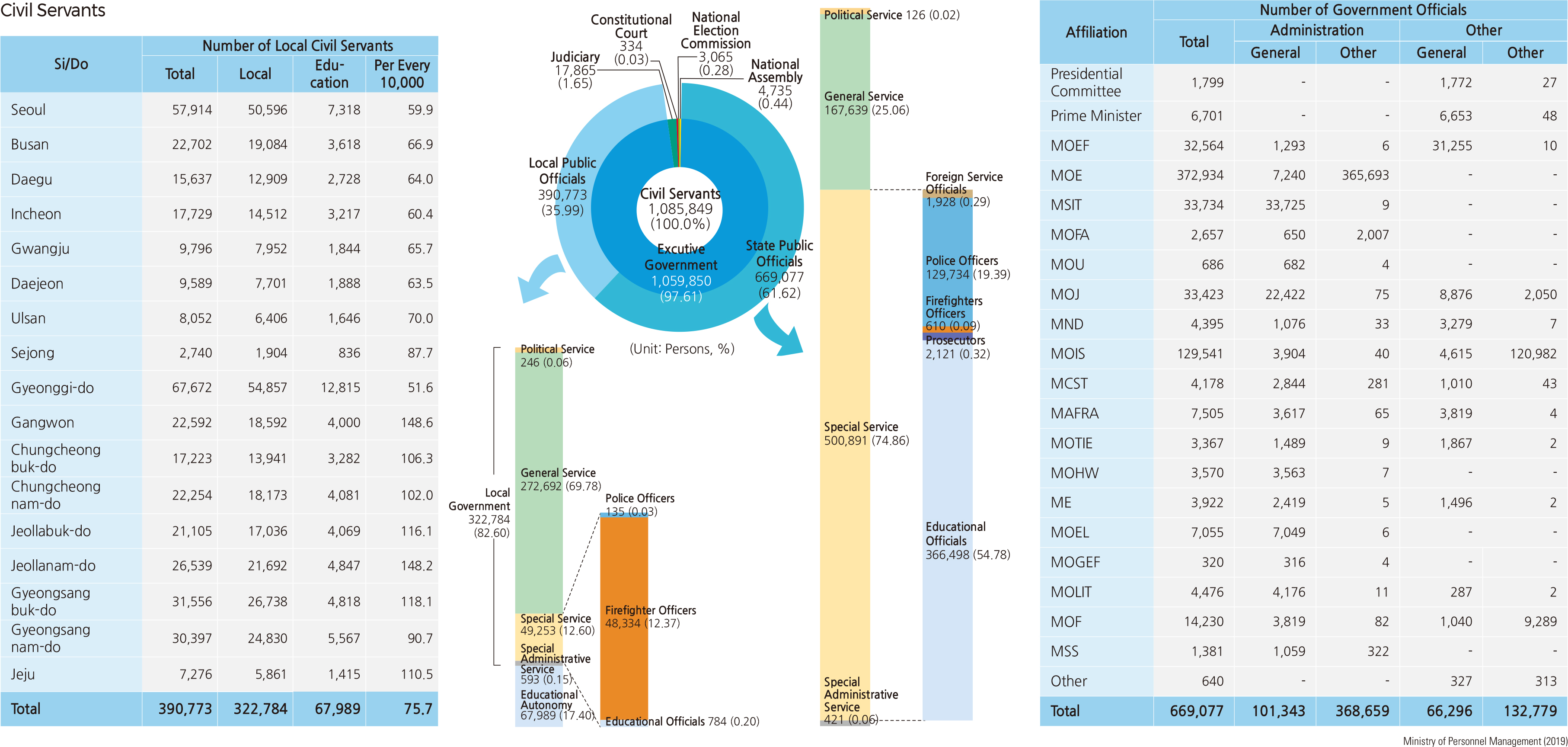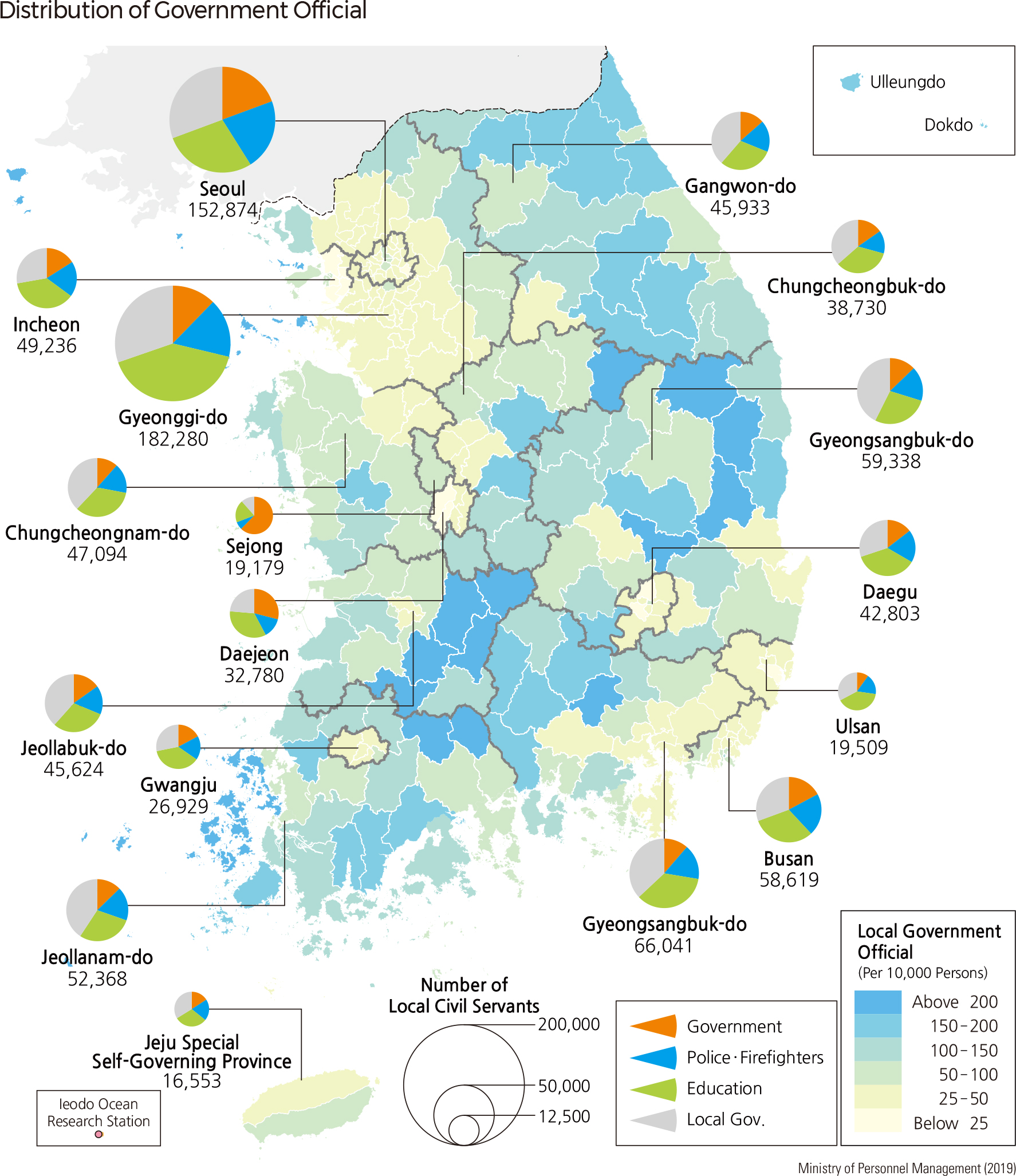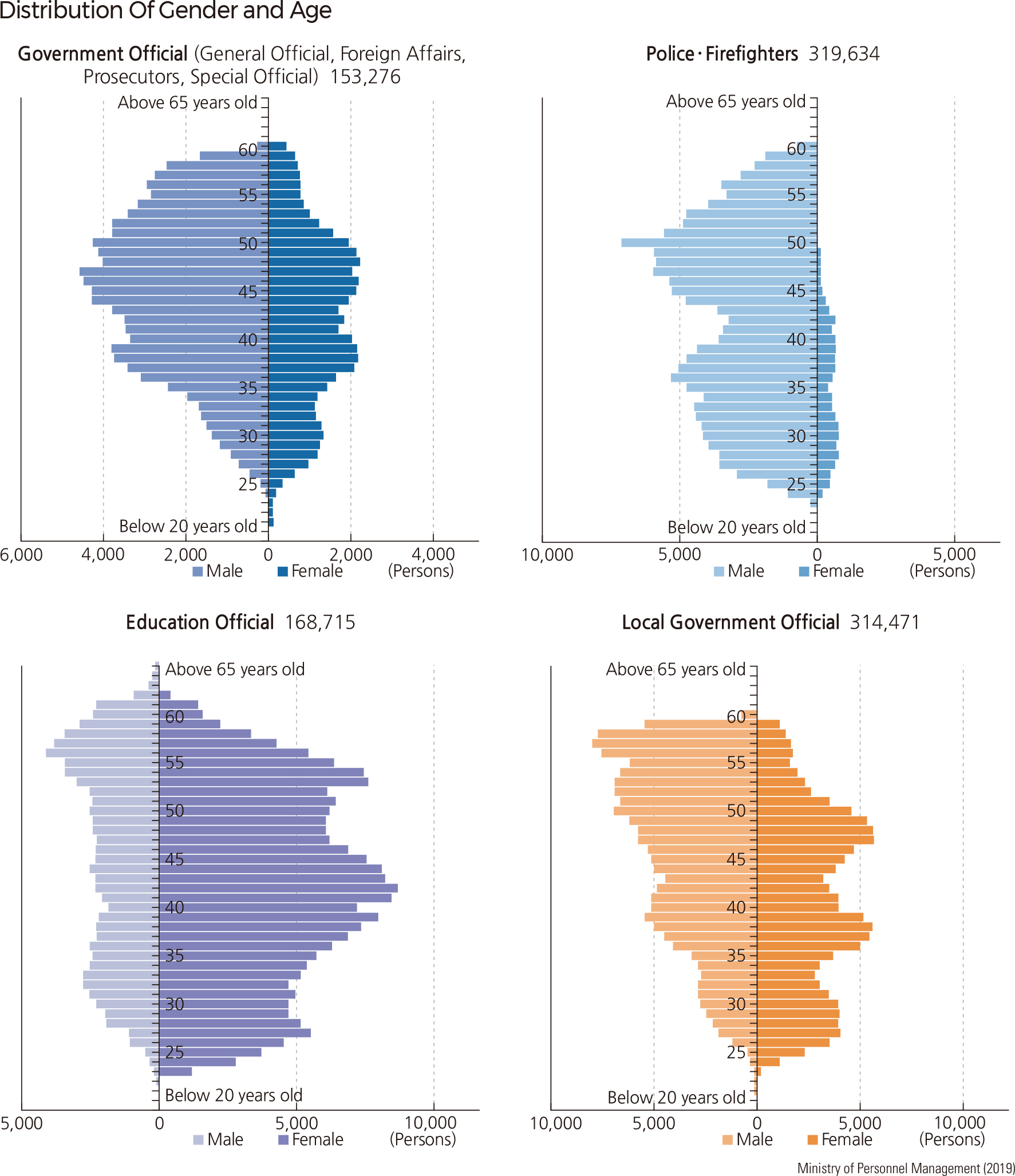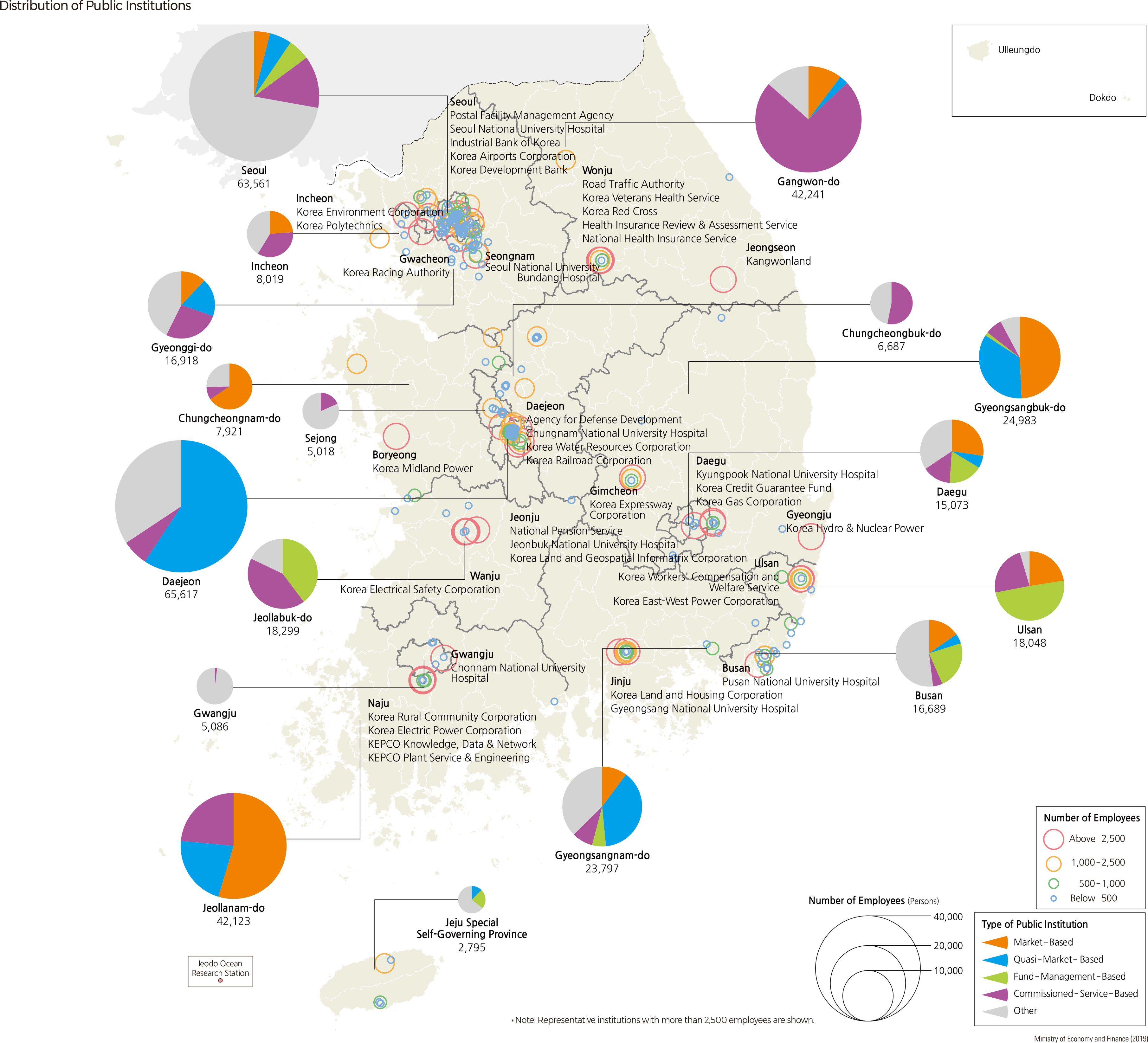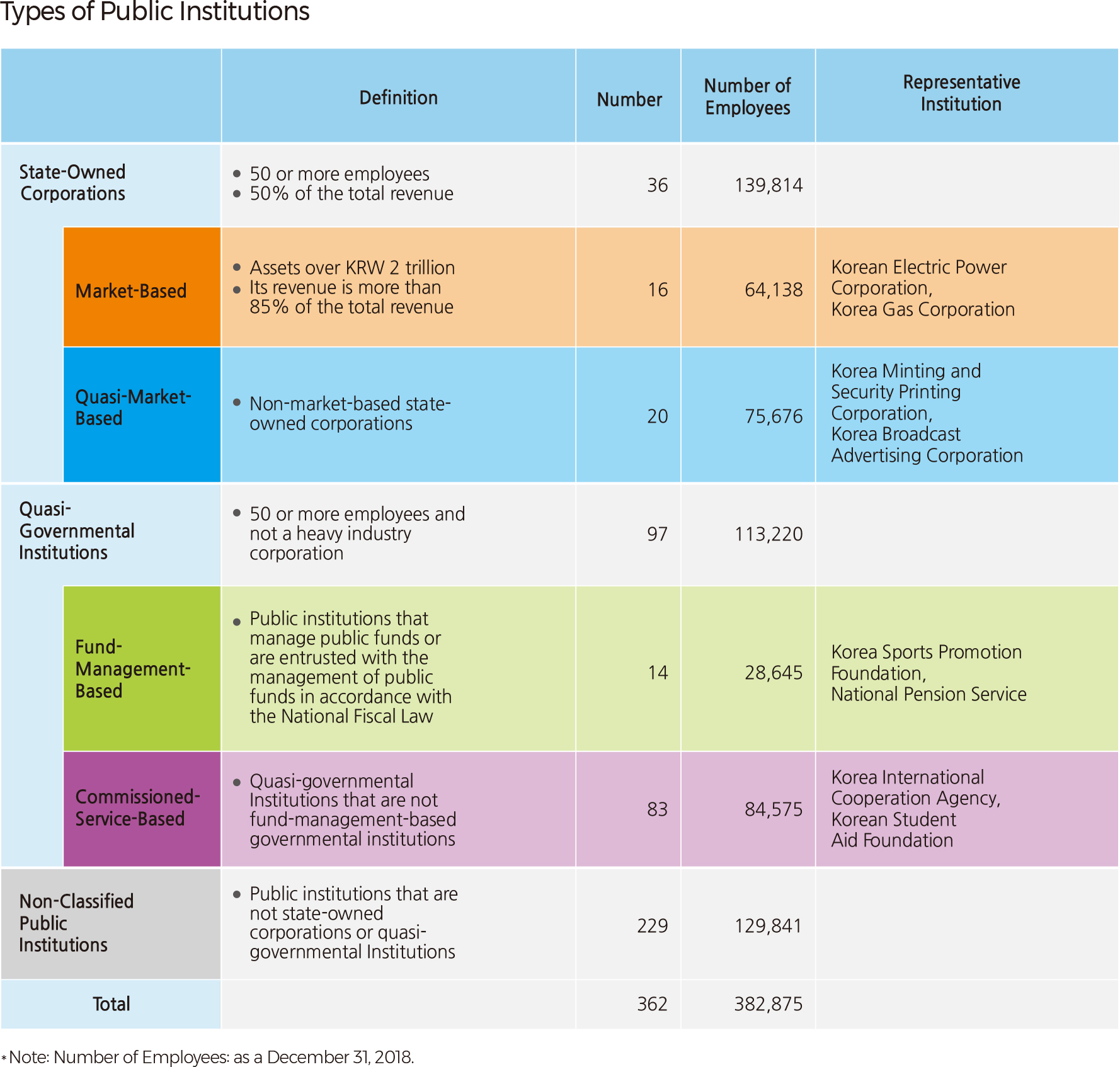English I 2019
As of 2018, the total number of public officials in Korea was approximately 1.09 million. Public officials serve in one of five main groups: the legislative branch, the judicial branch, the executive branch, the Constitutional Court of Korea, and the National Election Commission. The majority (97.6%) of public officials belong to the executive branch. Public officials of the executive branch fall into one of two categories: state public officials or local public officials. Local public officials are divided into local government officials and local public educational officials. Public officials in the legislative branch, the judicial branch, the Constitutional Court of Korea, and the National Election Commission make up 3.4% of all public officials.
In 2018, the highest number of public officials by occupation was (in order): state public educational officials, local public officials in general service, state public officials in general service, state police officers, local public educational officials, and local firefighter officials. The highest number of public officials by department was (in order): the Ministry of Education (including public educational officials), the Ministry of the Interior and Safety (including state police officers), the Ministry of Science and ICT (including postal officers), the Ministry of Justice (including correctional officials, immigration officials, and public prosecutors), and the Ministry of Strategy and Finance (including public officials in the National Tax Service and the Korea Customs Service).
The number of local public officials is almost proportional to the population; therefore, the larger the population of an administrative district, the larger the number of local public officials of that administrative district. However, the number of local public officials per ten thousand people is higher in administrative districts with low population density than in special cities and metropolitan cities where the population density is high.
In August 2018, 956,096 (95.6%) of the 1,000,227 state and local public officials (excluding those on leave) of the executive branch participated in the Civil Service Census. This census divided public officials of the executive branch into four categories: state public officials in the executive branch, including general services, prosecutors, diplomats, and those in special administrative services; police officers and firefighter officers, including state police officers, local autonomous police officers, and state and local firefighter officers; public educational officials, including teachers, faculty members, and staff in kindergartens, elementary schools, secondary schools, universities, and professional schools and programs; and local public officials in general or special administrative services of local governments and local education offices.
By gender, male and female public officials accounted for 55.0% and 45.0% of all public officials, respectively. The proportion of female public officials increased by 3.6%, compared to 41.4% in 2013. The lower the age group, the higher the proportion of female public officials.
By workplace, the number of public officials was the highest in Gyeonggi-do (182,280), followed by Seoul (152,874). For state public officials, Seoul (29,562), the most concentrated in administrative functions, had the largest number of public officials, followed by Gyeonggi-do (22,370) and Sejong Special Autonomous City (11,973) where Government Complex Sejong is located.
Public institutions are institutions that are established and operated by government investment or government financial support. Public Institutions are categorized by type: state-owned public corporation (market-based public corporations and quasi-market-based public corporations): quasi-governmental institutions (fund-management-based quasi-governmental institutions and commissioned service-based quasi-governmental institutions), and non-classified public institutions. As of 2019, there were 362 public institutions, including 23 affiliated institutions, and approximately 380,000 employees. Each year, the Minister of Strategy and Finance may designate new public institutions or release designated public institutions. Public institutions are supervised by the appropriate department of the central government. The number of employees in the public institutions affiliated with the Ministry of Trade, Industry and Energy, Ministry of Land, Infrastructure and Transport, Ministry of Education, Ministry of Health and Welfare, and Ministry of Science and ICT was approximately 260,000 employees or 70% of the total employees of all public institutions.
Previously, public institutions were concentrated in the Seoul metropolitan area. As a result, the relocation of public institutions to local provinces was driven to relieve overcrowding in the Seoul metropolitan area and to promote balanced national development. The central government enacted the Special Act on Balanced National Development in 2004 and established a plan for the relocation of public institutions in 2005. Since then, the central government has relocated public institutions to ten newly-developed innovation cities, including Wonju, Jincheon/Eumseong, Jeonju/Wanju, Naju, Gimcheon, Daegu, Jinju, Ulsan, Busan, and Seogwipo. |
